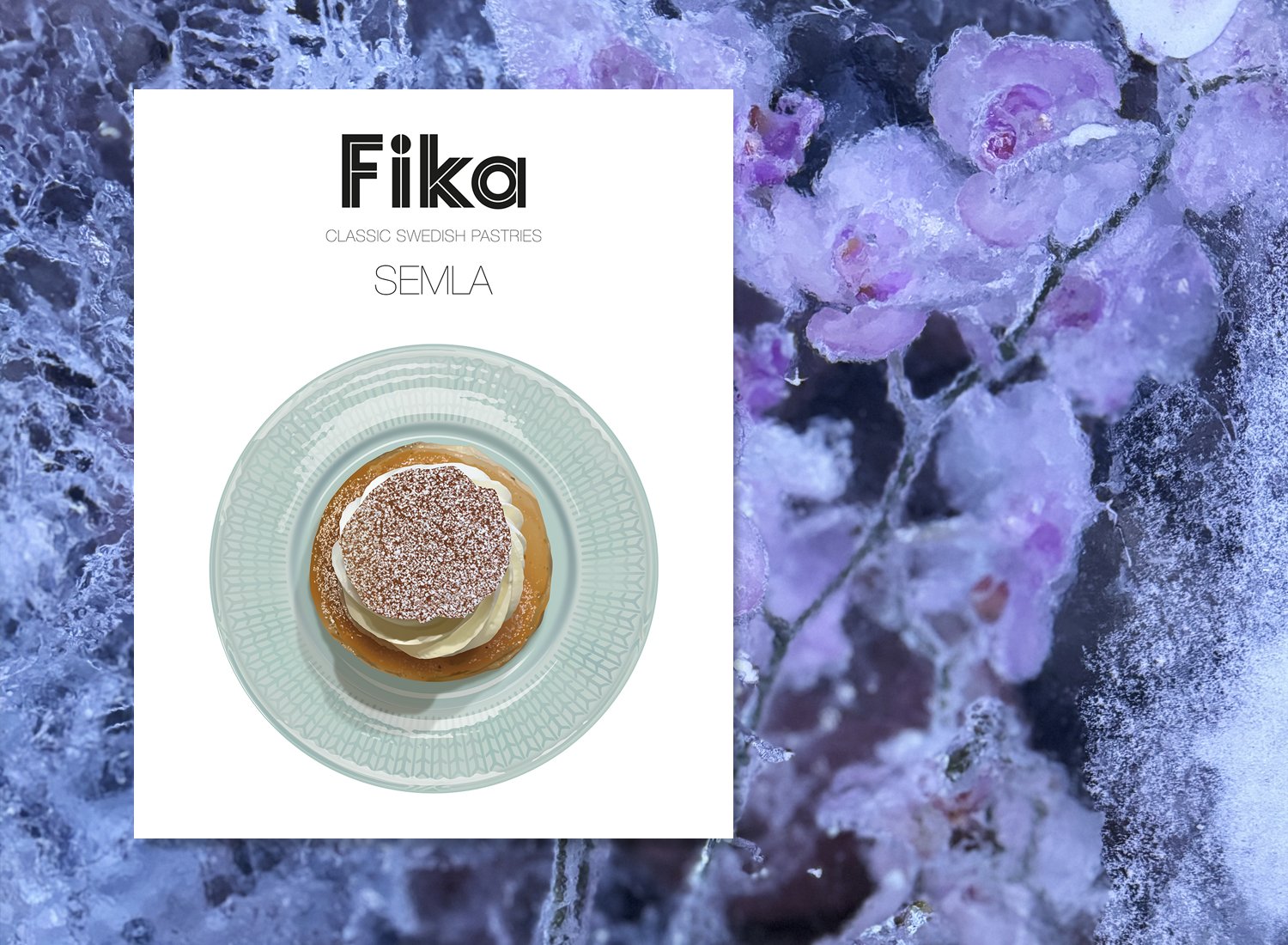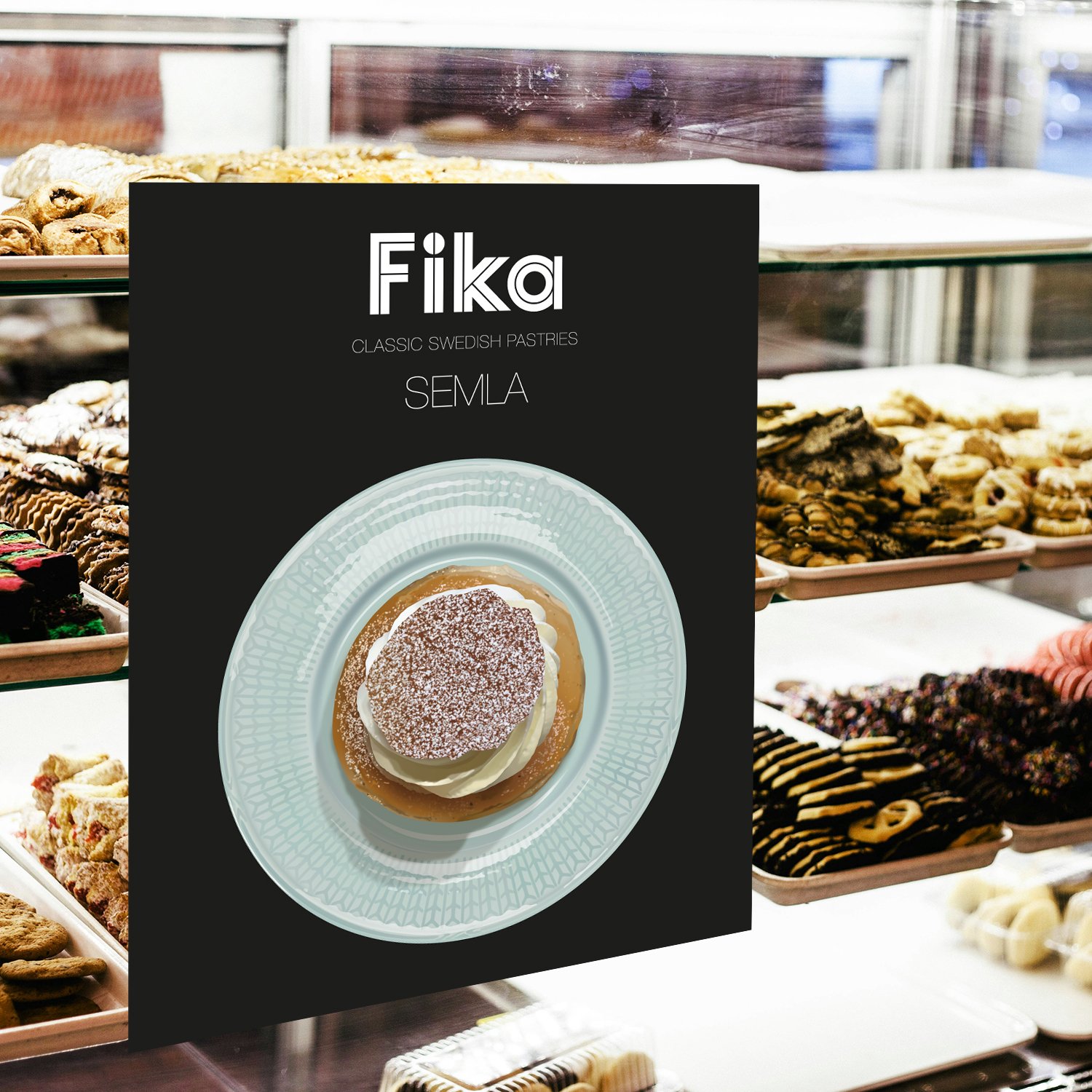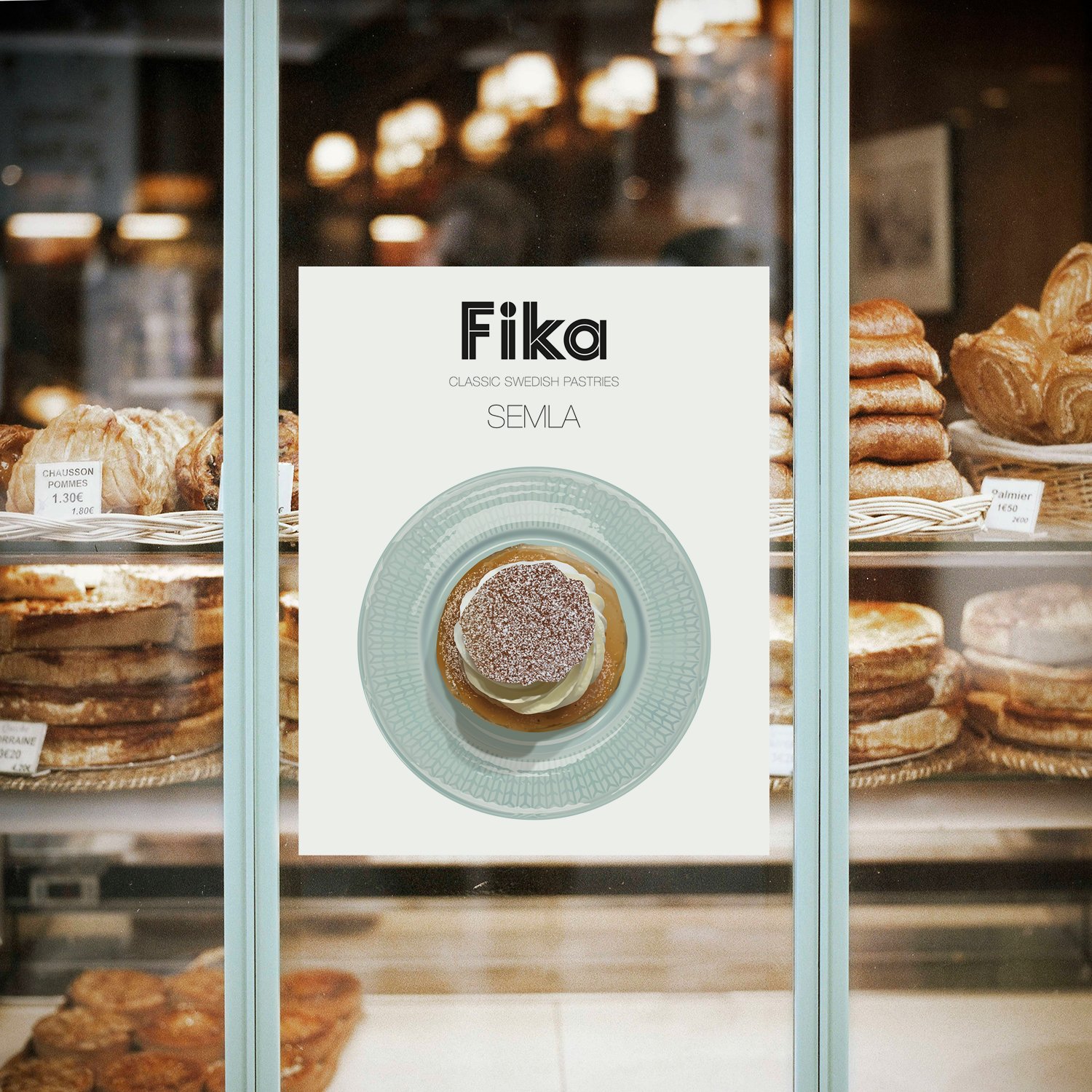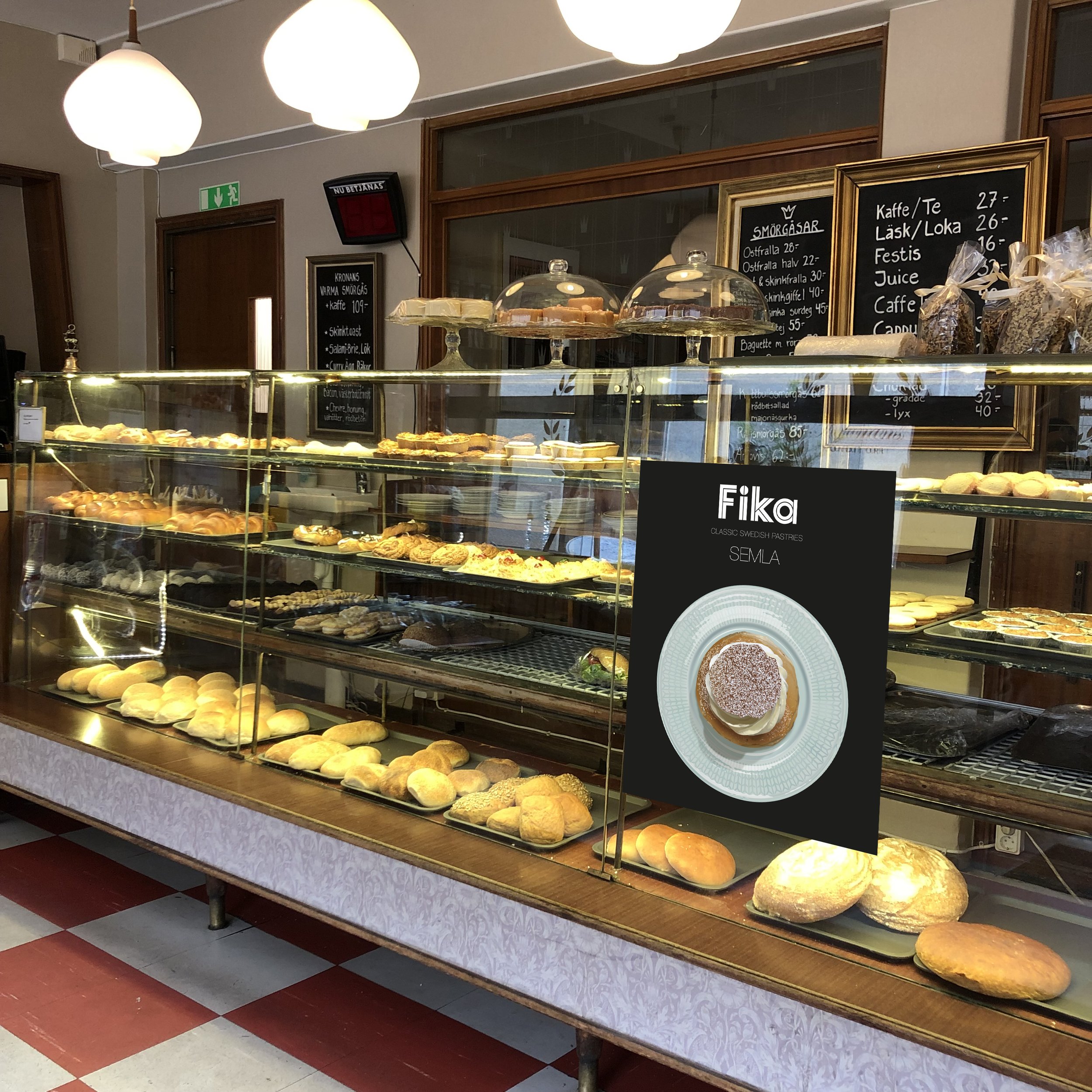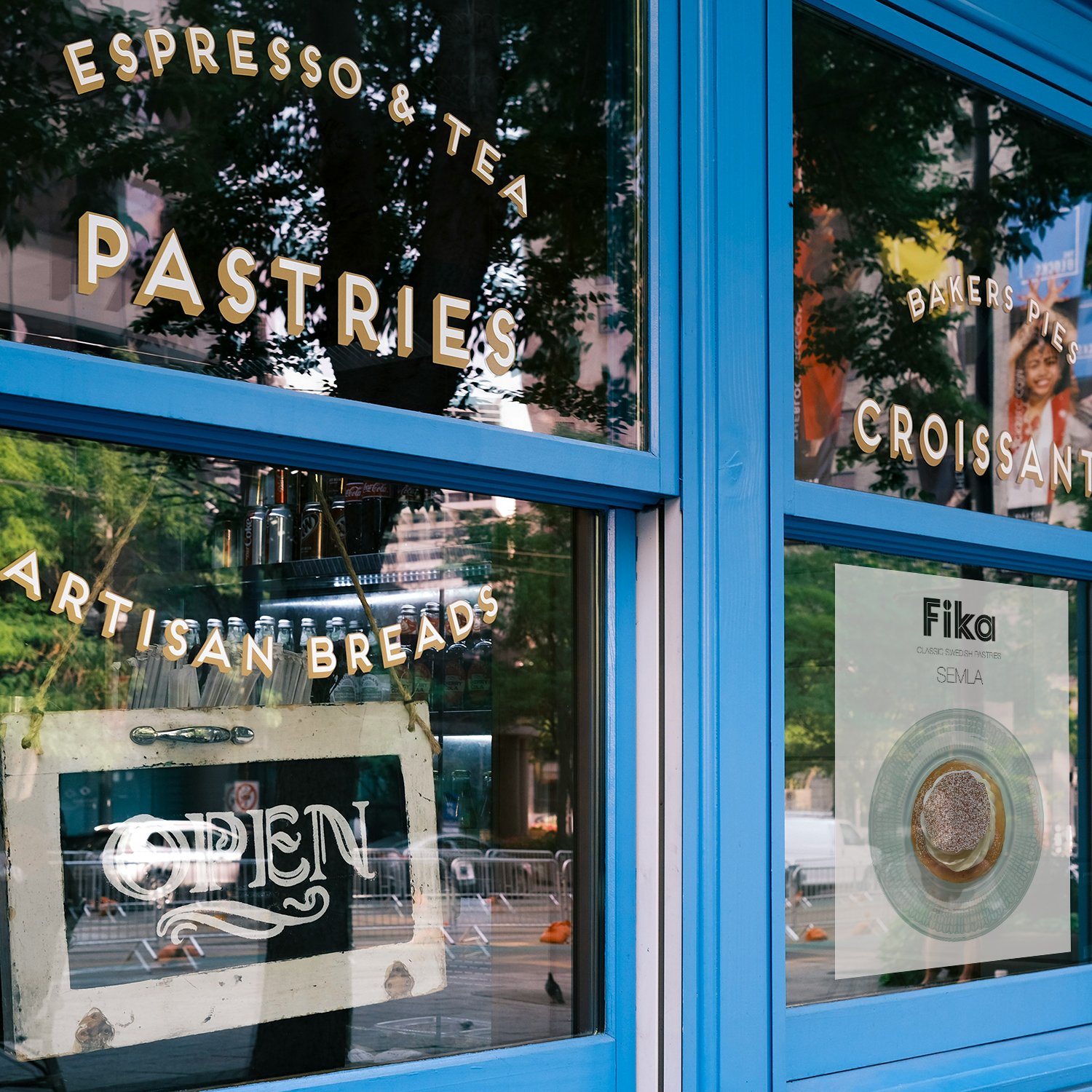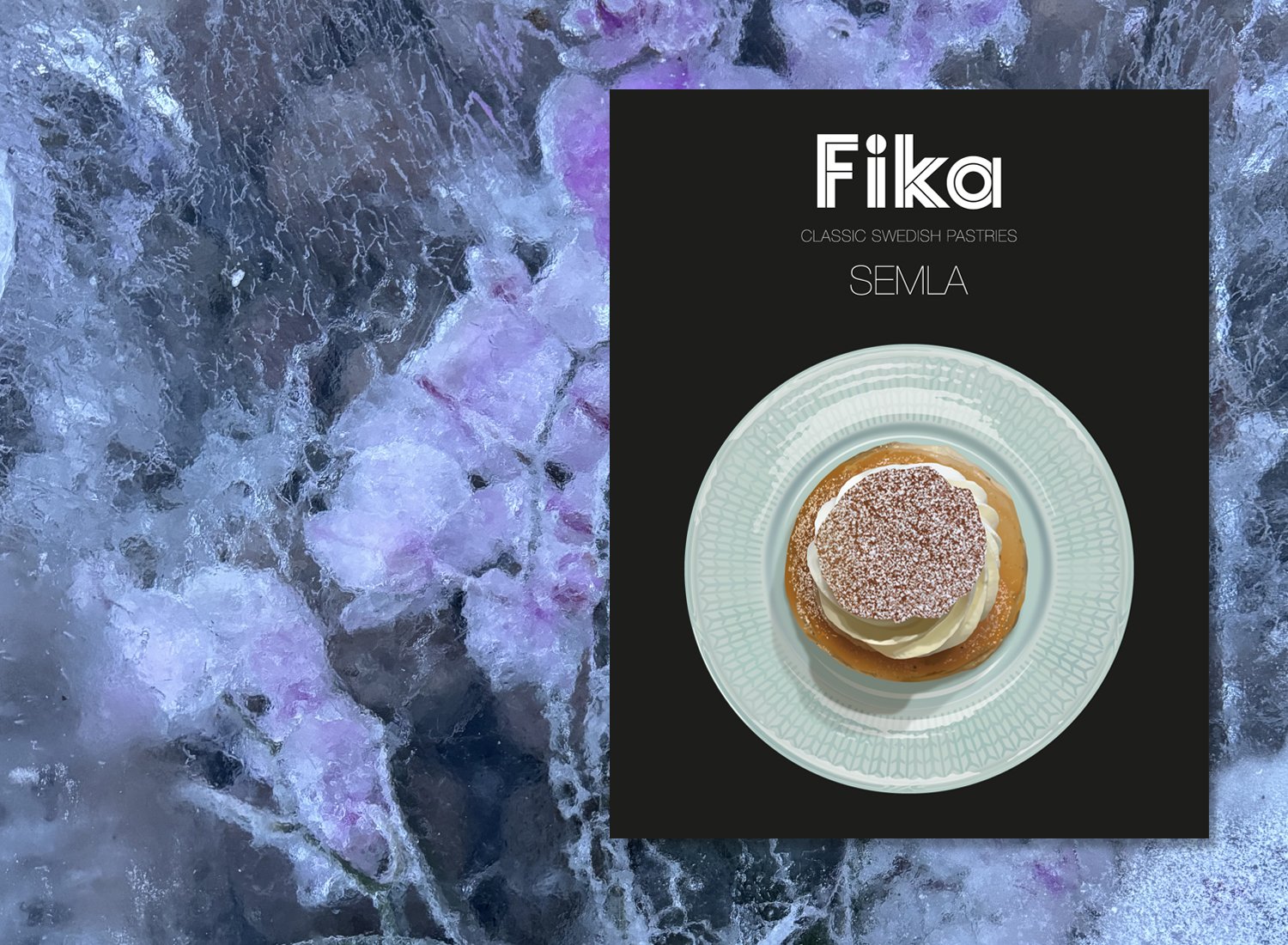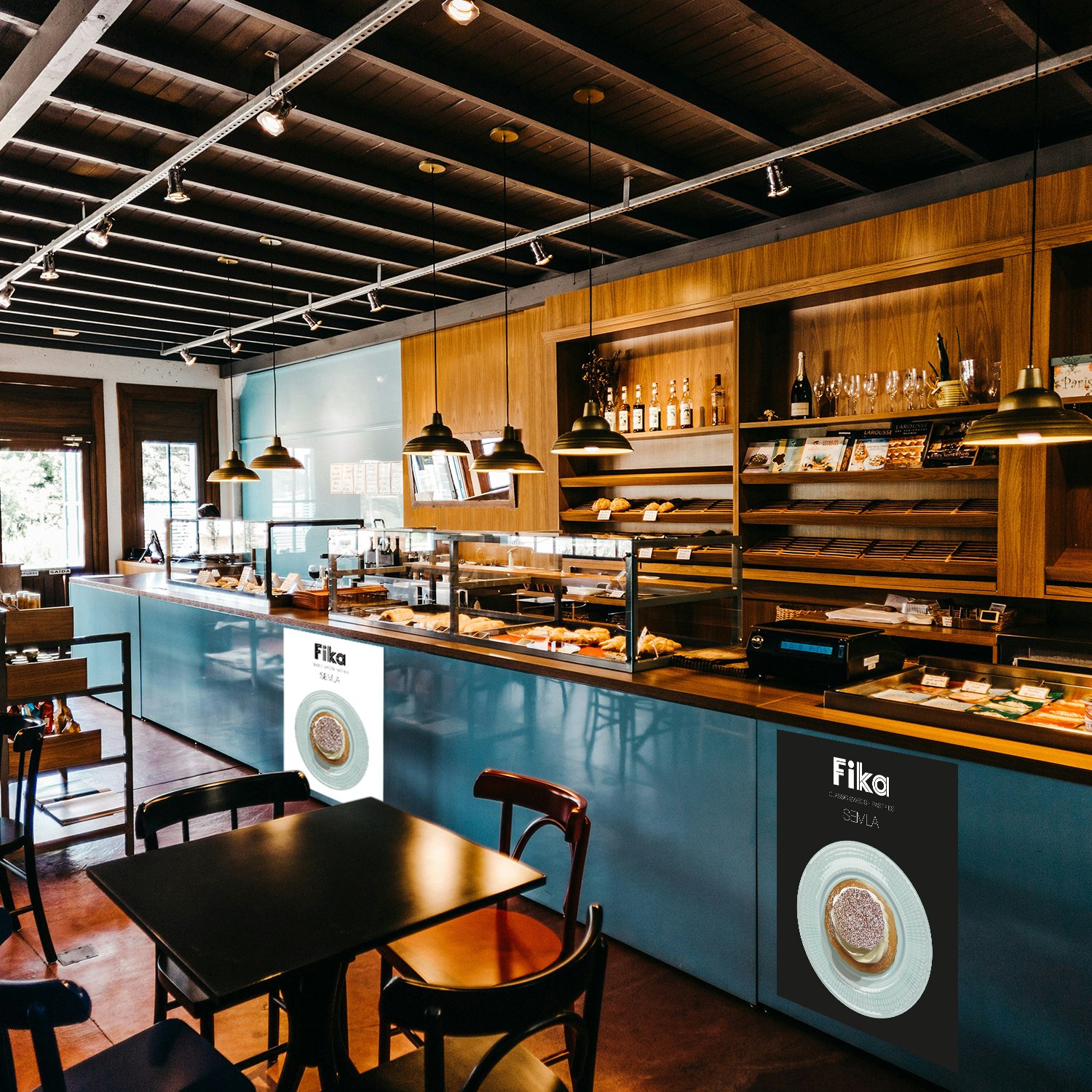The history of this very seasonal Swedish bun is older than you might think. The name is thought to be a mix of two Latin words, “simila” meaning wheat flour or bread baked from wheat flour, and “semi” for half. It was mixed with “semlja”, an old word of unknown origin meaning globe. Simila, and similar sounding words with the same meaning, spread during antiquity and were used by Romans, Greeks and Arabs alike.
During the 1500s in Copenhagen, Denmark there were special “Simle bakers” and in the Swedish king Gustaf Vasa’s Bible from 1541 the word appeared again when it was mentioned that offerings were made consisting of “baked semlo cakes mixed with oil”.
Starting as a plain round bun it began to transform from the 1500s and onwards. The first part of the change was that it was sweetened with honey, some years later the crumb was scooped out and cooked with cream and butter before being returned to the hole in the bun. In the 1700s almonds became more common in Sweden and they were ground and mixed with the crumb and cream mixture. In the 1850s almond paste was started to become more prevalent and took the place of the ground almonds. Not until the 1930s the whipped cream became an integral part of the bun, making it into what Swedes know and love today.
Up to the 1950s Swedes started eating Semla on Fat Tuesday, Fettisdagen in Swedish, and ate them until Easter. Only on Tuesdays though. This tradition has now given way to the Semla being sold from right after Christmas until Easter. In Sweden we eat an average of 4-5 Semla per person each year. It adds up to 40 million. Mind you, this is a bun that is solely sold during a three month period so you see them pretty much everywhere during this time of year.
In essence, when many parts of the world have carnevals, Swedes sit down with a cup of coffee and a wheat bun filled with almond paste and whipped cream.
The Italian Saint and Her Swedish Cat Shaped Bun Companion
Today on December 13 Swedes all over the world celebrate the Italian Saint Lucia of Syracuse, also known as Saint Lucy, with boys and girls wearing white dresses, holding candles and singing special Lucia songs. It wouldn’t be a proper Swedish celebration without fika so Lucia comes with a special treat, a traditional Swedish pastry called Lussekatt. This is a sweet bun filled with saffron and raisins that has been baked and enjoyed in Sweden during this season since the 17th century, even though the saffron wasn’t added until the late 1800s. It was probably first introduced by German and Dutch merchants in the 1600s, who brought a sweet Christmas bread they called duivekater to Gothenburg. Duivekater turned into the more Swedish Dövelskatter (katt is cat in Swedish) and when it started getting associated with Lucia celebrations the name changed to Lussekatt. Today this not very cat shaped bun is so popular, every December 13 Swedes eat an estimated 8 million of them, almost one for each Swede.
The Classic Swedish Fika
Swedes are famous for many things. Ikea, Abba, smorgasbord and herring to name a few. Almost as well known, and totally irresistible, is the Swedish Fika, a coffee or tea break with friends, family, colleagues or just by yourself. A time to pause, chat, reflect, and to eat something sweet. Traditionally you had seven different types of cake, cookies and buns with your fika but now you usually settle with less. This new series of prints is a celebration of this relaxing tradition. All of the pastries are as Swedish as the term fika itself.
When you buy a print we’ll make sure to include a recipe of the pastry so that you can get the full fika experience.
Enjoy!

